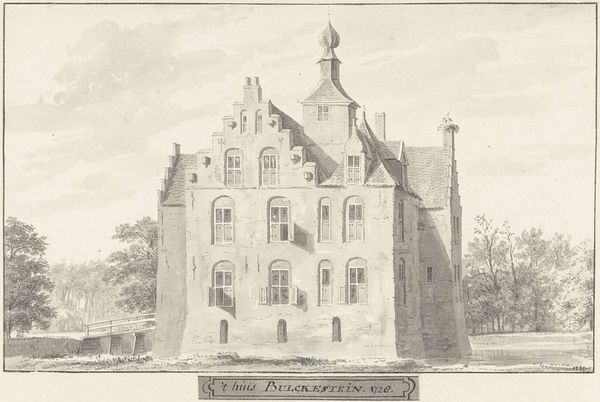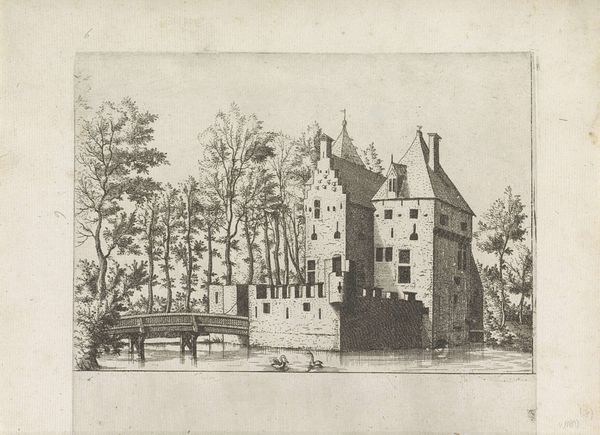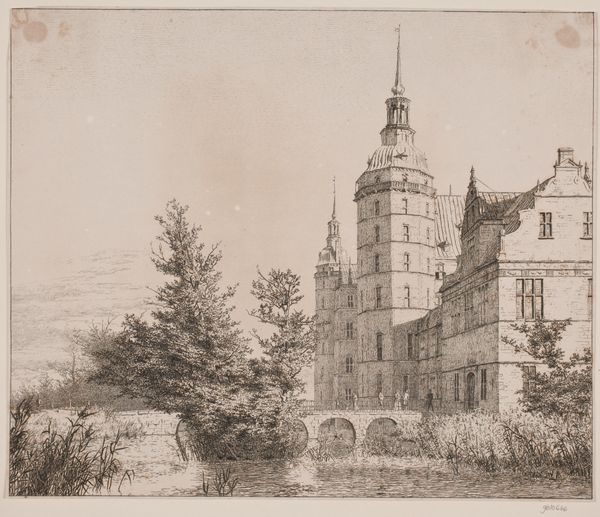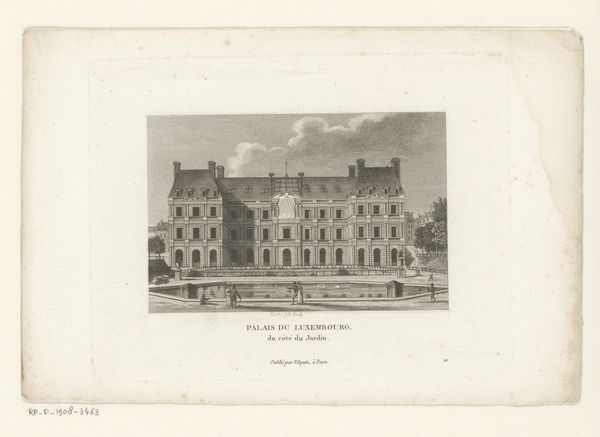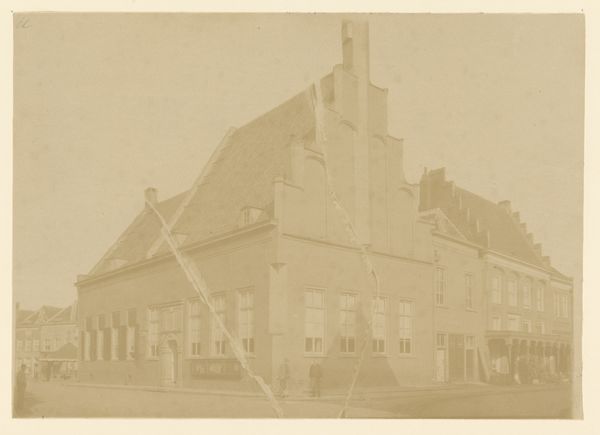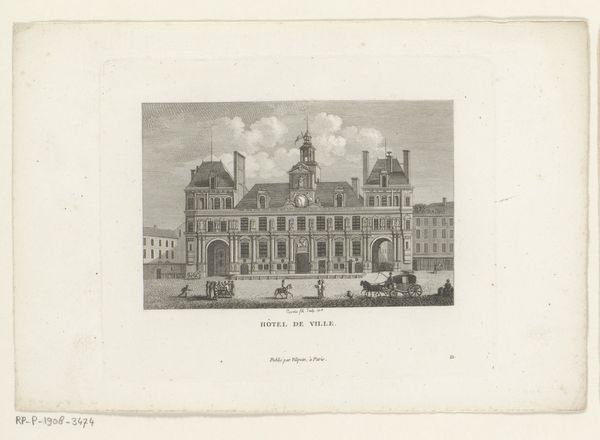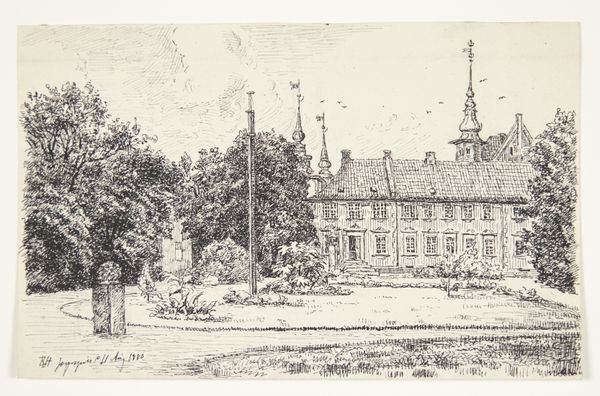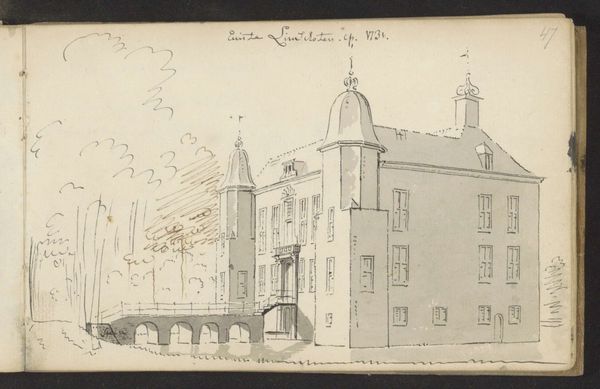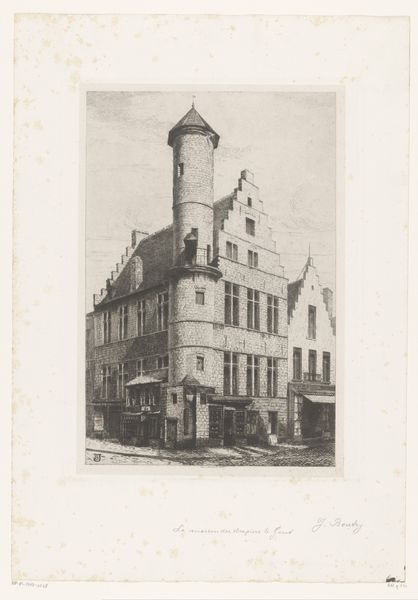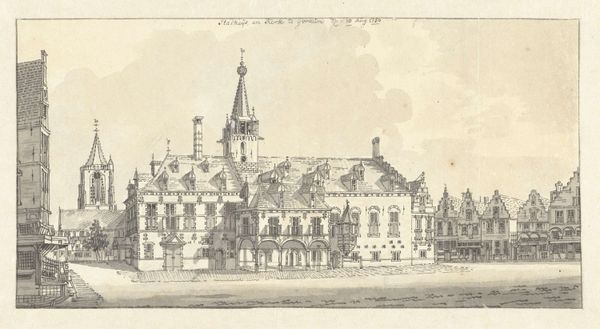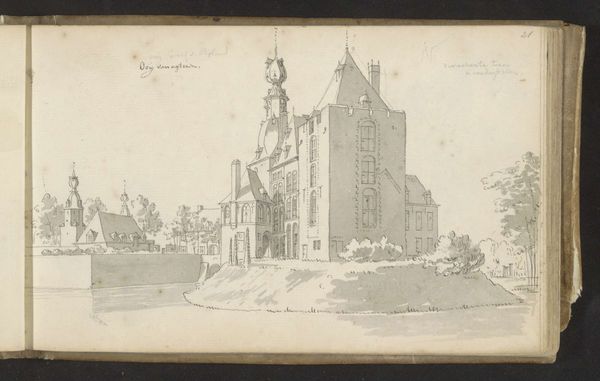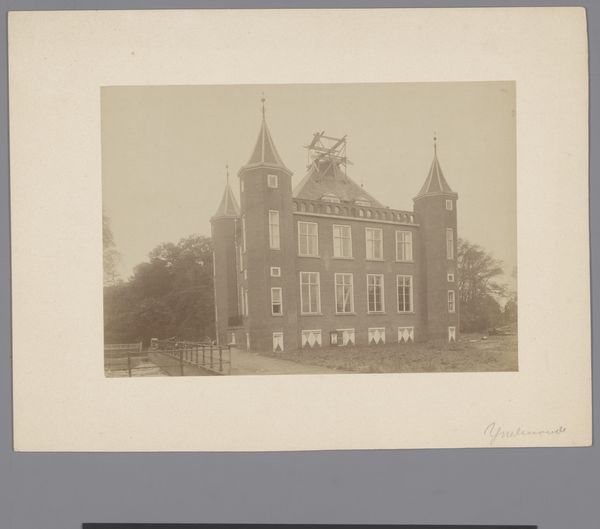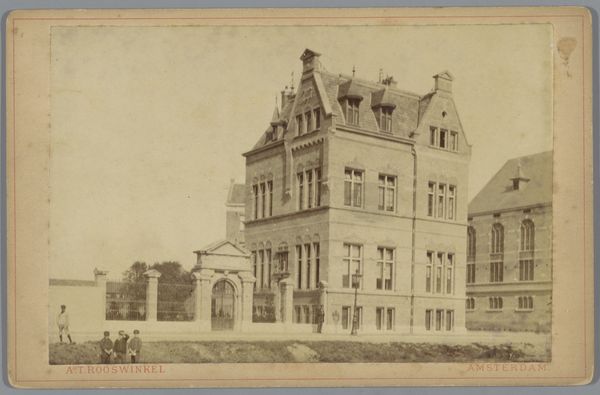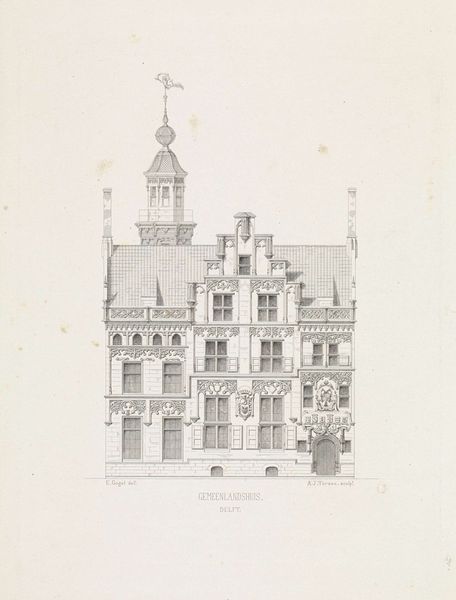
Dimensions: height 82 mm, width 109 mm
Copyright: Rijks Museum: Open Domain
Hendrik Spilman made this print of Klein Poelgeest Castle around 1730 using etching and engraving techniques. The fine lines of the image were created by incising a metal plate, allowing ink to settle into these grooves, and then transferring the image onto paper through intense pressure. What's fascinating here is the meticulous labour involved. The burin's precise cuts reflect a deep understanding of both material and technique. Spilman skillfully uses line variations to depict texture, light, and depth, transforming a flat surface into a seemingly three-dimensional view of the castle and its surroundings. Beyond mere representation, this print offers insight into the social context of the time. Prints like these were often commissioned by the wealthy to showcase their estates, serving as status symbols and circulating notions of property and privilege. Spilman's craft, therefore, plays a role in reinforcing the social hierarchies of 18th-century Netherlands. Considering this print, we are encouraged to look closely at the materials and processes through which the world is represented, and to recognize the labour and social meanings embedded within.
Comments
No comments
Be the first to comment and join the conversation on the ultimate creative platform.
